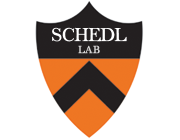Bi-functional cross-linking reagents efficiently capture protein-DNA complexes in Drosophila embryos.
Publication Year
2014
Type
Journal Article
Abstract
Chromatin immunoprecipitation (ChIP) is widely used for mapping DNA-protein interactions across eukaryotic genomes in cells, tissues or even whole organisms. Critical to this procedure is the efficient cross-linking of chromatin-associated proteins to DNA sequences that are in close proximity. Since the mid-nineties formaldehyde fixation has been the method of choice. However, some protein-DNA complexes cannot be successfully captured for ChIP using formaldehyde. One such formaldehyde refractory complex is the developmentally regulated insulator factor, Elba. Here we describe a new embryo fixation procedure using the bi-functional cross-linking reagents DSG (disuccinimidyl glutarate) and DSP (dithiobis[succinimidyl propionate). We show that unlike standard formaldehyde fixation protocols, it is possible to capture Elba association with insulator elements in 2-5 h embryos using this new cross-linking procedure. We show that this new cross-linking procedure can also be applied to localize nuclear proteins that are amenable to ChIP using standard formaldehyde cross-linking protocols, and that in the cases tested the enrichment was generally superior to that achieved using formaldehyde cross-linking.
Keywords
Journal
Fly (Austin)
Volume
8
Issue
1
Pages
43-51
ISSN Number
1933-6942
Alternate Journal
Fly (Austin)
PMID
24135698

